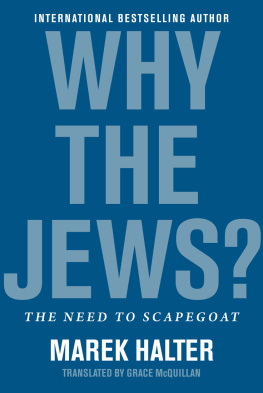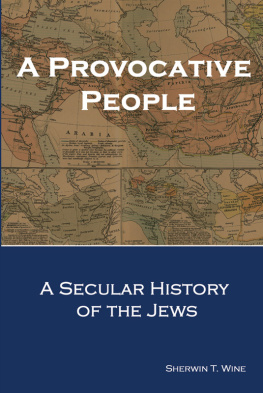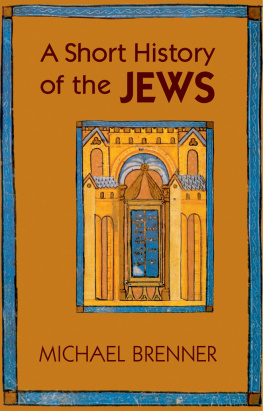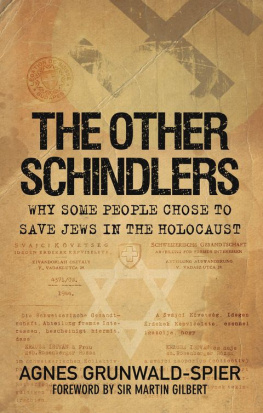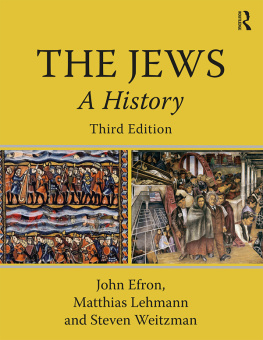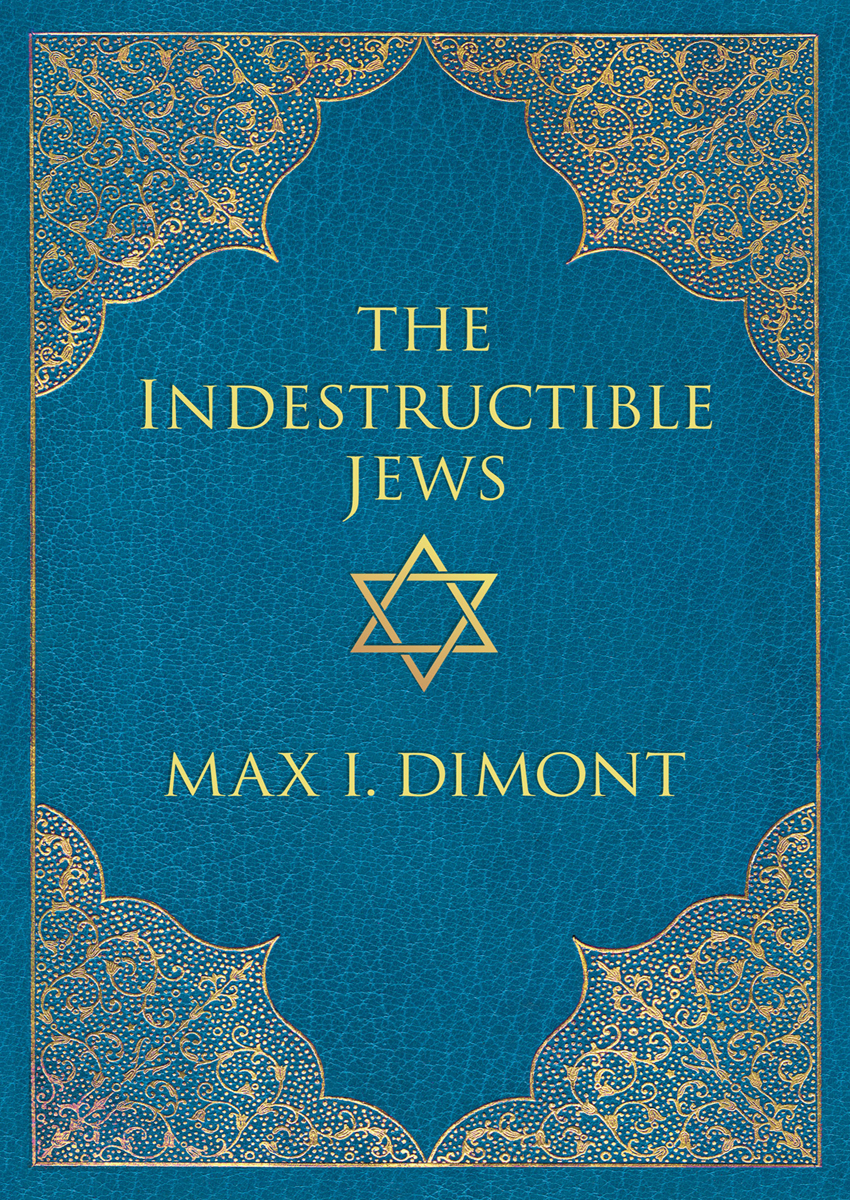Preface
For all too long, Jews and Christians have distorted Jewish history with so many pious frauds and smothered it with so much pious mythology that at times it has been difficult for scholar or layman to perceive its real grandeur.
It was not always thus. The Old Testament, most of it unequaled for sheer narrative skill, gives us an entirely different picture of Jewish historyproud, grand, and dynamic. It is also the first historical record, in the modern sense of the word, so accurate that an archaeologist can go to where the Bible said things happened and find the evidence.
The Greeks and Romans patterned their historical writings on the Jewish idea of history as a continuous biography of a people. But with the decline of Greece and the fall of Rome, the writing of objective history disappeared for close to a thousand years.
After the Renaissance it became the fashion in Church circles to denigrate Jewish history in order to ennoble the Christian view of things, thus reducing Jewish history to a meaningless, minor footnote. In ghetto circles, it became fashionable to count dead Jews in order to enhance Jewish suffering, thus reducing Jewish history to a meaningless, boring dirge.
In the nineteenth century, with the era of the German Enlightenment (Aufklrung), so-called scientific Judaism was born. A more apt phrase would be public-relations Judaism. In their eagerness to portray Jews to Christians as nice, tolerant, taxpaying citizens, German Reform Jewish scholars began to suppress anything they thought was unfavorable to the Jews. In their works, the Jew emerged as an innocent shnook, pushed by predatory Christians to the slaughter-bench of history. Retroactively, they conferred the crown of martyrdom on Jews all the way back to Abraham.
With the twentieth century, scholars at last began to discard the stereotypes of Church, ghetto, and apologetes. Modern scholarsboth Jewish and Christianbegan to reexamine Jewish history with new, objective, critical eyes. Jewish scholars especially began to arm themselves with general world history, religious and secular. They let the facts fall where they would, and as obscuring myths were discarded, Jewish history was revealed in a new light.
History can be compared to a vast smrgsbord, with the facts spread on a prepared table like exotic dishes, each vying for attention. There are two ways the historian can serve himself. He can close his eyes and help himself to a chance sampling of what the table has to offer, in which case he would have that highly praised mode of history known as objective. Or he can select those facts that suit his concept of history, in which case he would construct that highly criticized mode of history known as interpretive. We prefer the second school, becauseto paraphrase an epigram by Oscar Wildeobjective history gives us the dates of everything and the meaning of nothing. Facts in themselves have no intrinsic worth other than that they happened. Meaning can come only after facts have been sifted through the human mind and clothed with value.
The same holds true for every great work of art, which is not only an aesthetic presentation but a statement of value as well. For example, the Duke of Ferrara in Brownings My Last Duchess kills his wife because of her inability to make value judgments. In Brownings words, the Dukes complaint was:
Sir, twas all one! My favor at her breast,
The dropping of the daylight in the West,
The bough of cherries some officious fool
Broke in the orchard for her, the white mule
She rode with round the terraceall and each
Would draw from her alike the approving speech,
Or blush at least. She thanked men, good! but thanked
SomehowI know not howas if she ranked
My gift of a nine-hundred-years-old name
With anybodys gift.
Just as the Duke demanded from his Duchess a value differentiation between a bough of cherries and his nine-hundred-years-old name, so a reader can demand that a historian make a value differentiation between an earthquake killing a million people and a dictator ordering the murder of a like number of people. Not the quantity but the morality of the act is the meaningful factor.
One need only read the contradictory accounts of the Reformation by Catholic and Protestant scholars to appreciate the difference interpretation makes. Though all may agree on dates, names, events, they may all disagree as to their meaning and relative importance. Yet such divergences of opinion are essential, for an important task of the historian is to render a moral judgment.
There is also a presumption among many scholars that responsible thought can be expressed only in scholarly language. But thought should not hide its meaning in turgid sentences. History is too important to be smothered by obscure writing. Scholarship does not die with lucidity, or vanish in the warmth of a smile. We hold there is nothing unscholarly in writing in the American vernacular. Nor should one hesitate to employ an apt clich which, like a metaphor in poetry, can give instant understanding.
The reader who glances through the bibliography will note the general omission of works by Jewish historians of yesteryear whose writings so greatly contributed to the popular concept of Jewish history as a saga of specialized suffering. Rather, we have emphasized the works of modern scholars who have cleared paths through a jungle of otherwise meaningless facts. If this authors vision of Jewish history extends beyond the customary horizons, it is because he stands on the shoulders of this new breed of scholars who have pioneered in the new historiography.
Thus our views on Jews in Babylonian and Hellenic times are not based on the judgments of the nineteenth-century historians, no matter how revered their names, but on the works of twentieth-century writers like Jacob Neusner, Saul Lieberman, and Victor Tcherikover. Our concept of Jesus and his times has been fashioned not by the pious pronouncements of Christian theologians or intemperate tracts by Jewish zealots, but by the works of such objective scholarsChristian and Jewishas Charles Guignebert, Paul Winter, and Hugo Mantel. Our observations on the Talmud and Talmudists were inspired by the scholarship of such men as Harry A. Wolfson, Louis Jacobs, and Boaz Cohen. Our understanding of the messianic eschatology was deepened by such pioneering works as The Pursuit of the Millennium, by Norman Cohn, Political Messianism, by J. L. Talmon, and A History of Messianic Speculation in Israel, by Abba Hillel Silver.



